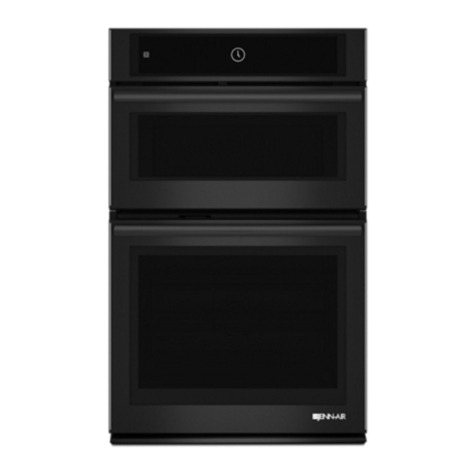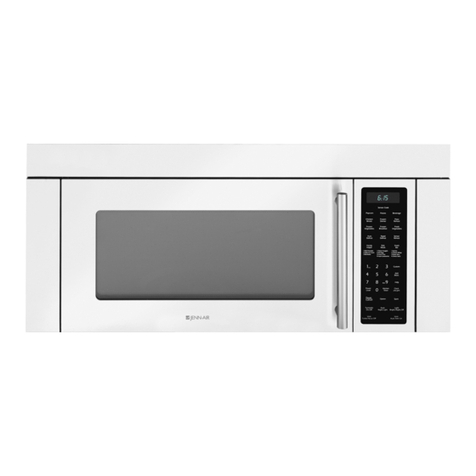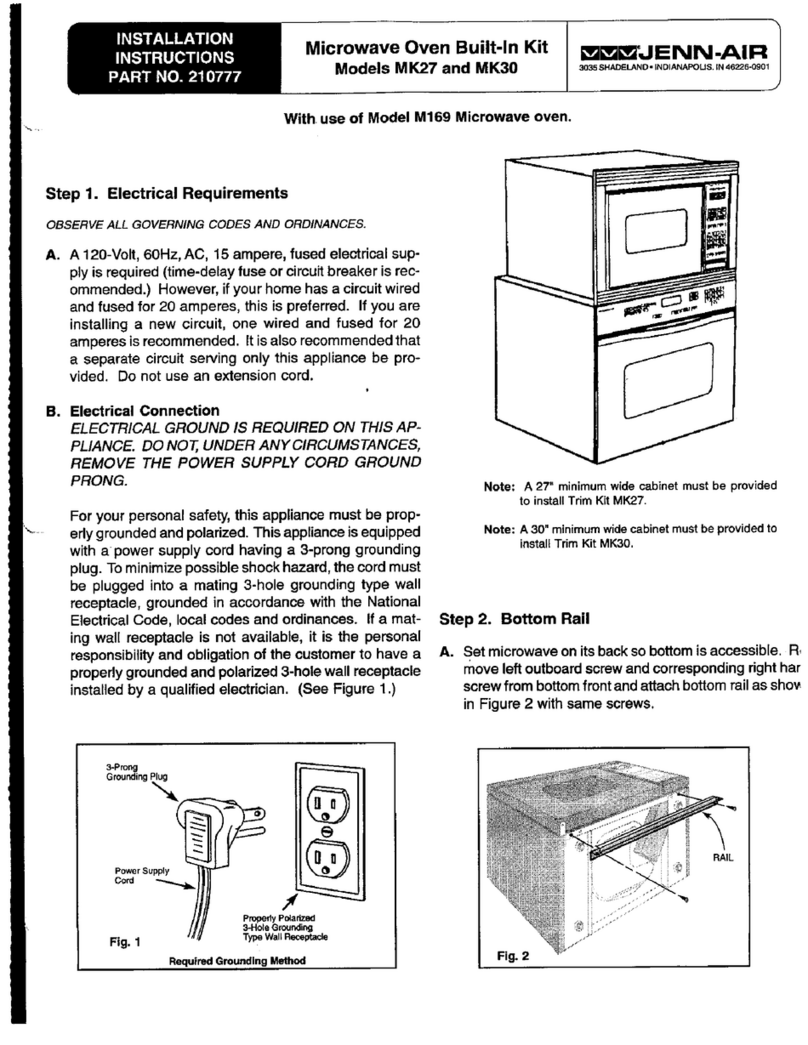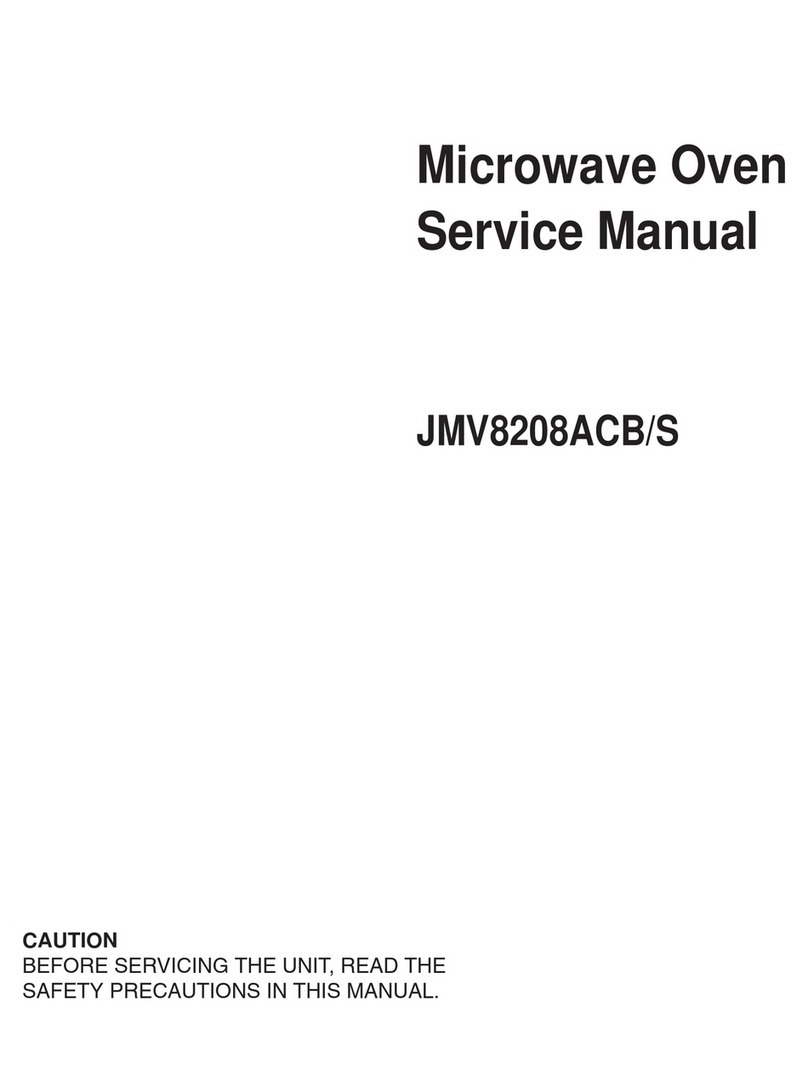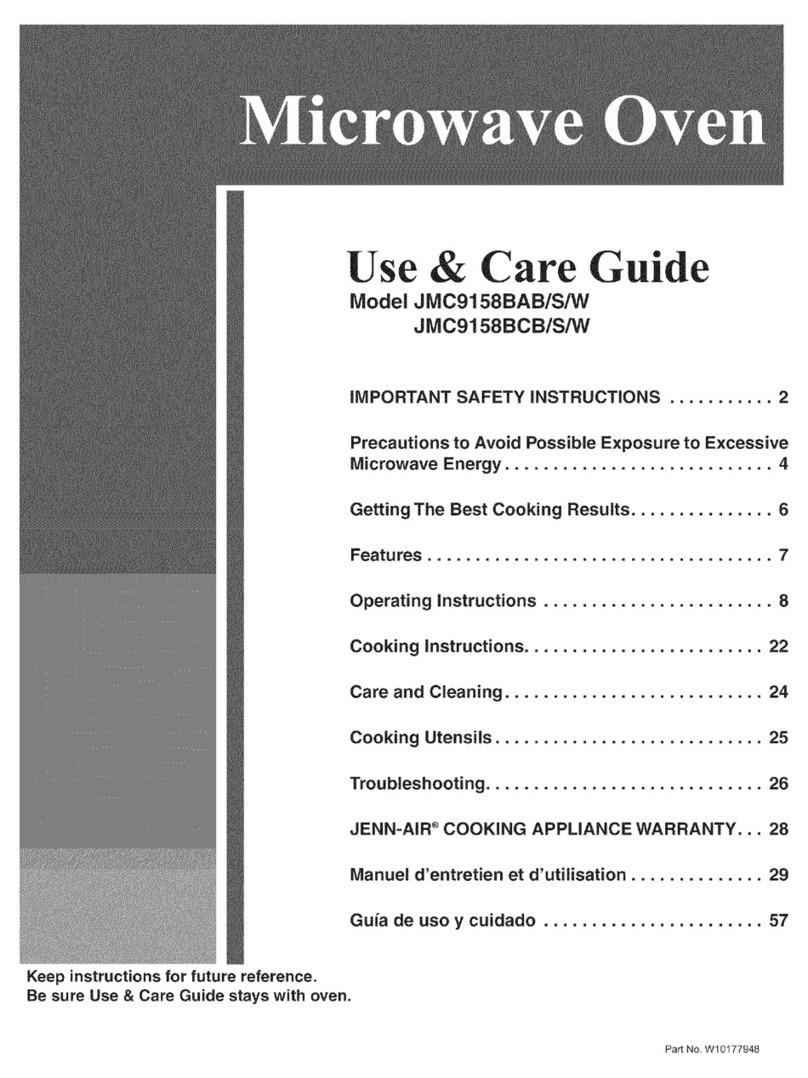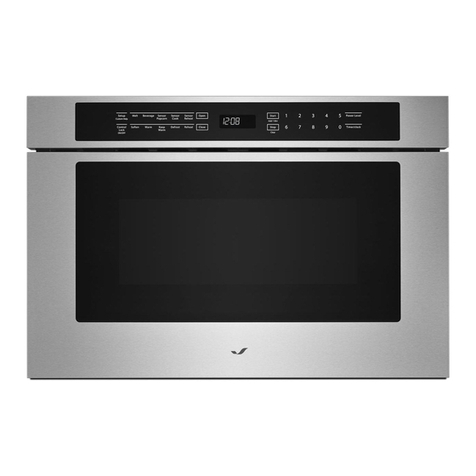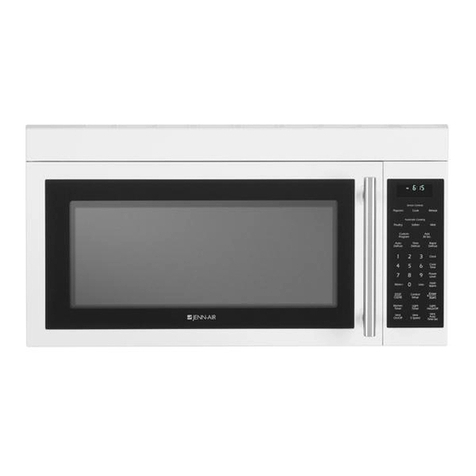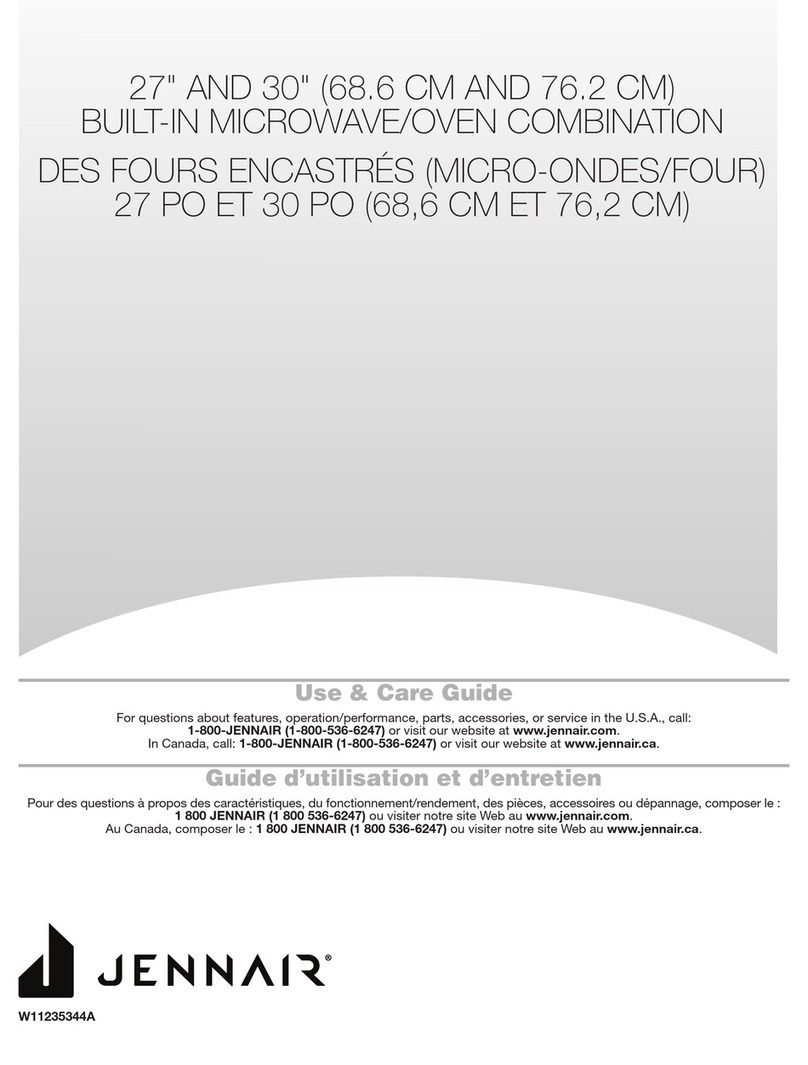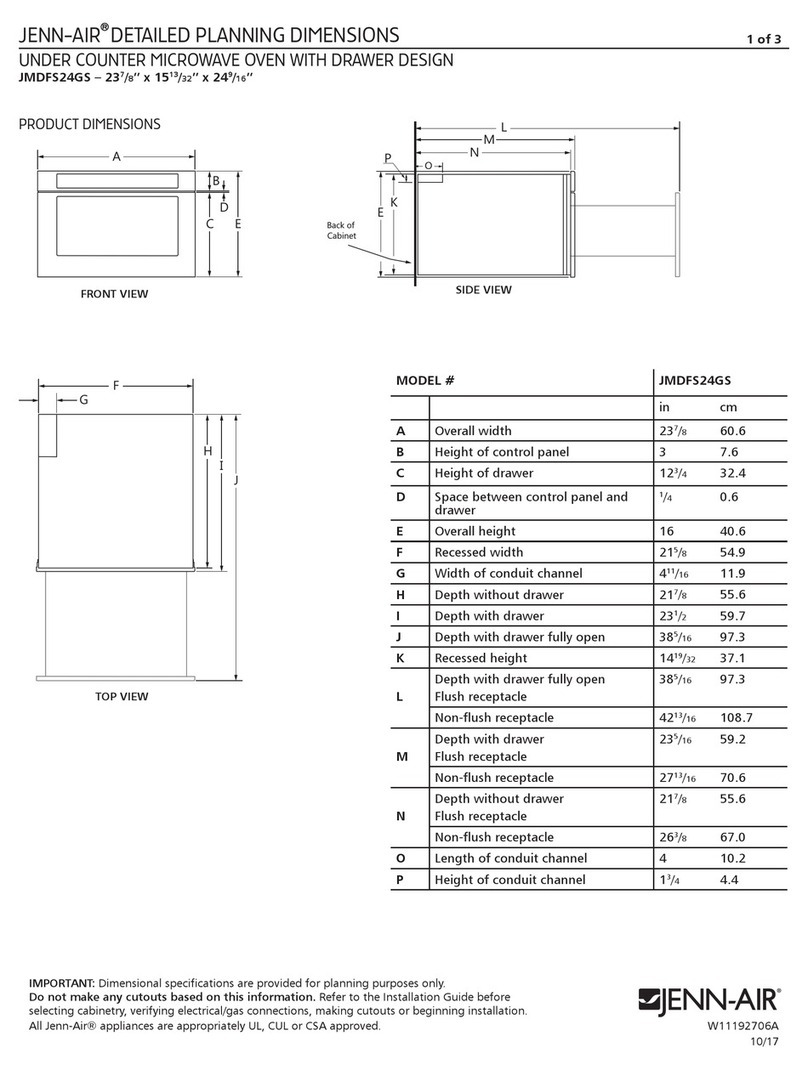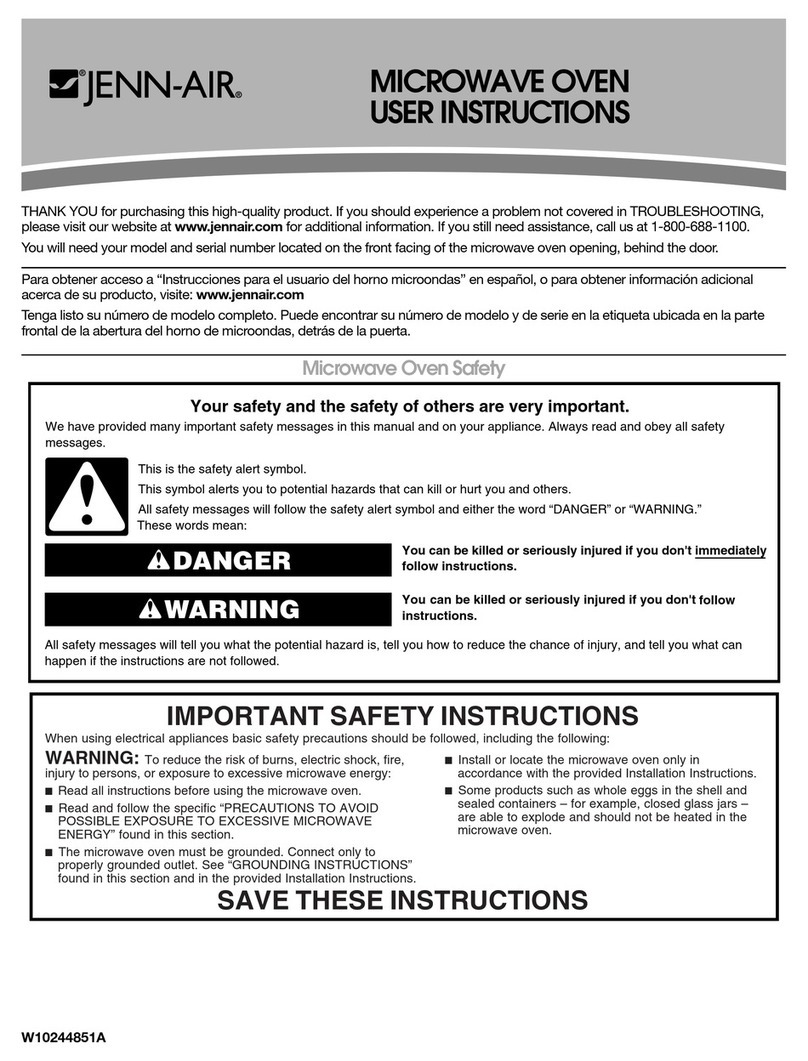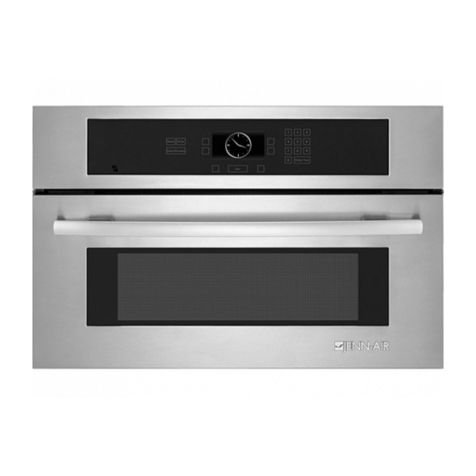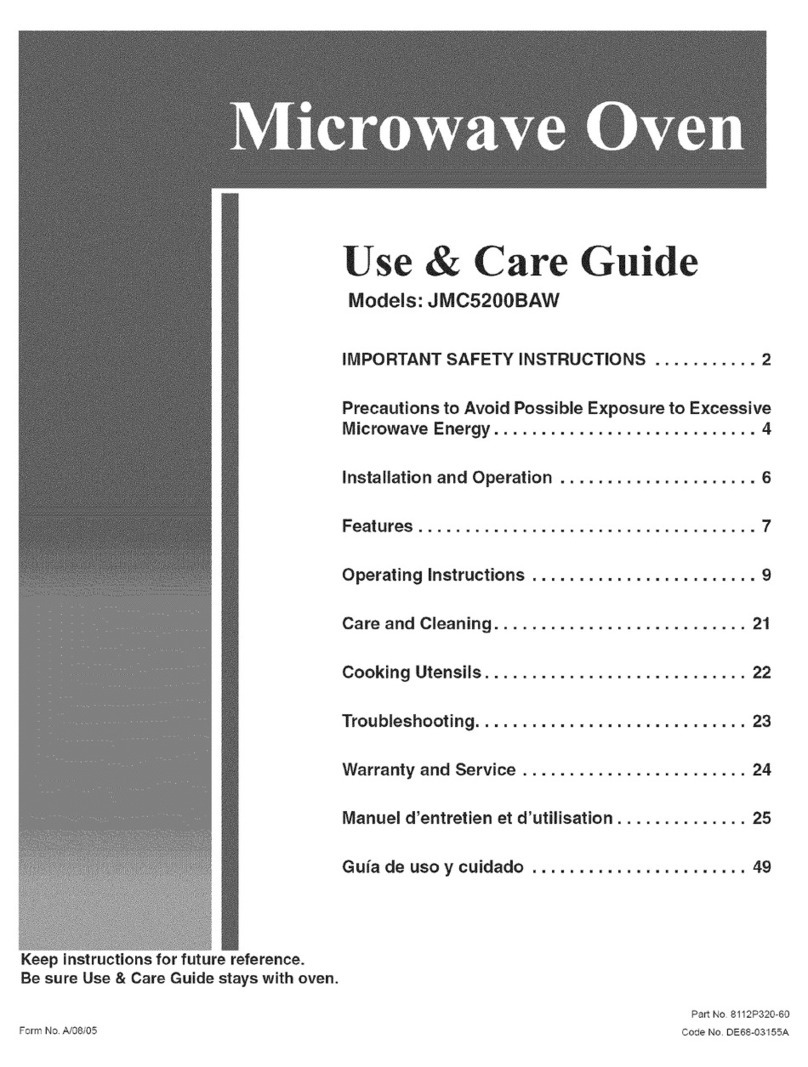6
Other Helpful Information
GETTING THE BEST
RESULTS FROM YOUR
MICROWAVE OVEN
Keep an eye on hings. The
ins ruc ions in his book have
been formula ed wi h grea care,
but your success in preparing food
depends, of course, on ho much
attention you pay to the food as it
cooks. Al ays atch your food hile
it cooks. Your micro ave oven is
equipped ith a light that turns on
automatically hen the oven is in
operation so that you can see inside
and check the progress of your
recipe. Directions given in recipes to
elevate, stir, and the like should be
thought of as the minimum steps rec-
ommended. If the food seems to be
cooking unevenly, simply make the
necessary adjustments you think
appropriate to correct the problem.
Fac ors affec ing cooking imes.
Many factors affect cooking times.
The temperature of ingredients used
in a recipe makes a big difference in
cooking times. For example, a cake
made ith ice-cold butter, milk, and
eggs ill take considerably longer to
bake than one made ith ingredients
that are at room temperature. All of
the recipes in this book give a range
of cooking times. In general, you ill
find that the food remains under-
cooked at the lo er end of the time
range, and you may sometimes ant
to cook your food beyond the maxi-
mum time given, according to per-
sonal preference. The governing phi-
losophy of this book is that it is best
for a recipe to be conservative in giv-
ing cooking times. While under-
cooked food may al ays be cooked
a bit more, overcooked food is ruined
for good. Some of the recipes, partic-
ularly those for bread, cakes, and
custard, recommend that food be
removed from the oven hen they
are slightly undercooked. This is not
a mistake. When allo ed to stand,
usually covered, these foods ill con-
tinue to cook outside of the oven as
the heat trapped ithin the outer por-
tions of the foods gradually travels
in ard. If the foods are left in the
oven until they are cooked all the ay
through, the outer portions ill
become overcooked or even burned.
As you gain experience in using your
micro ave oven, you ill become
increasingly skillful in estimating both
cooking and standing times for vari-
ous foods.
SPECIAL TECHNIQUES
IN MICROWAVE
COOKING
Browning: Meats and poultry that
are cooked fifteen minutes or longer
ill bro n lightly in their o n fat.
Foods that are cooked for a shorter
period of time may be brushed ith a
bro ning sauce to achieve an appe-
tizing color. The most commonly
used bro ning sauces are
Worcestershire sauce, soy sauce,
and barbecue sauce. Since relatively
small amounts of bro ning sauces
are added to foods, the original flavor
of recipes is not altered.
Covering: A cover traps heat and
steam and causes food to cook more
quickly. You may either use a lid or
micro ave cling-film ith a corner
folded back to prevent splitting.
Covering wi h waxed paper:
Waxed paper effectively prevents
spattering and helps food retain
some heat. Since it makes a looser
cover than a lid or cling-film, it allo s
the food to dry out slightly.
Wrapping in waxed paper or paper
owel: Sand iches and many other
foods containing prebaked bread
should be rapped prior to
micro aving to prevent drying out.
Arranging and spacing: Individual
foods such as baked potatoes, small
cakes, and hors d’oeuvres ill heat
more evenly if placed in the oven and
equal distance apart, preferably in a
circular pattern. Never stack foods on
top of one another.
S irring: Stirring is one of the most
important of all micro aving tech-
niques. In conventional cooking,
foods are stirred for the purpose of
blending. Micro aved foods, ho ev-
er, are stirred in order to spread and
redistribute heat. Al ays stir from the
outside to ards the center as the
outside food heats first.
Turning over: Large, tall foods such
as roasts and hole chickens should
be turned so that the top and bottom
ill cook evenly. It is also a good idea
to turn cutup chicken and chops.
Placing hicker por ions near he
edge: Since micro aves are attract-
ed to the outside portion of foods, it
makes sense to place thicker por-
tions of meat, poultry and fish to the
outer edge of the baking dish. This
ay, thicker portions ill receive the
most micro ave energy and the
foods ill cook evenly.
Eleva ing: Thick or dense foods are
often elevated so that micro aves
can be absorbed by the underside
and center of the foods.
Piercing: Foods enclosed in a shell,
skin, or membrane are likely to burst
in the oven unless they are pierced
prior to cooking. Such foods include
both yolks and hites of eggs, clams
and oysters, and many hole veg-
etables and fruits.
Tes ing if cooked: Because foods
cook so quickly in a micro ave oven,
it is necessary to test food frequently.
Some foods are left in the micro ave
until completely cooked, but most
foods, including meats and poultry,
are removed from the oven hile still
slightly undercooked and allo ed to
finish cooking during standing time.
The internal temperature of foods ill
rise bet een 5° F (3° C) and 15° F
(8° C) during standing time.

